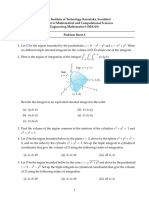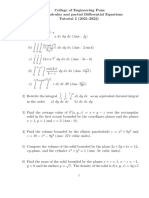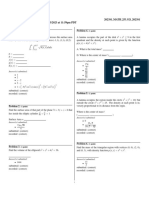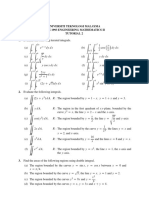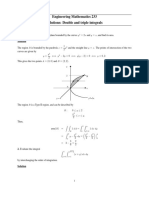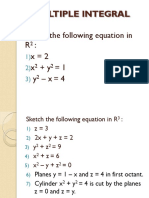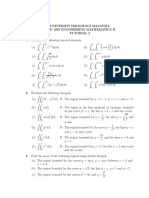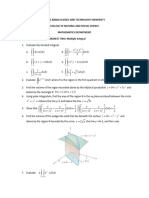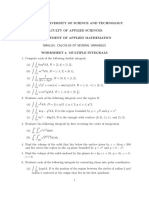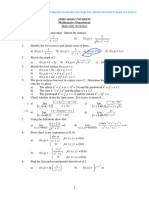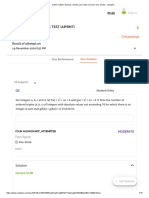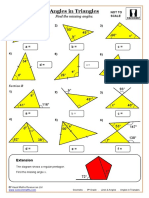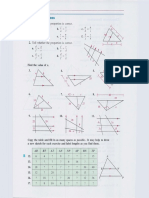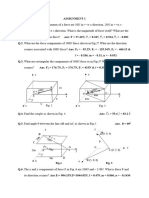0% found this document useful (0 votes)
17 views2 pagesTutorial 3 VC
The document outlines a tutorial for the MA1011E Mathematics-I course at the National Institute of Technology Calicut, covering topics such as triple integrals, cylindrical and spherical coordinates, and applications like mass and moments of inertia. It includes various problems requiring the evaluation of integrals, transformations, and calculations of volumes and centroids for different geometric shapes. The tutorial is structured into sections with specific tasks and examples to enhance understanding of the mathematical concepts presented.
Uploaded by
hoorbanu788Copyright
© © All Rights Reserved
We take content rights seriously. If you suspect this is your content, claim it here.
Available Formats
Download as PDF, TXT or read online on Scribd
0% found this document useful (0 votes)
17 views2 pagesTutorial 3 VC
The document outlines a tutorial for the MA1011E Mathematics-I course at the National Institute of Technology Calicut, covering topics such as triple integrals, cylindrical and spherical coordinates, and applications like mass and moments of inertia. It includes various problems requiring the evaluation of integrals, transformations, and calculations of volumes and centroids for different geometric shapes. The tutorial is structured into sections with specific tasks and examples to enhance understanding of the mathematical concepts presented.
Uploaded by
hoorbanu788Copyright
© © All Rights Reserved
We take content rights seriously. If you suspect this is your content, claim it here.
Available Formats
Download as PDF, TXT or read online on Scribd
/ 2







